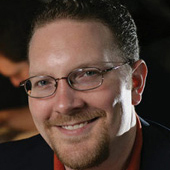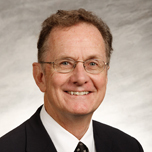
The Federal Communications Commission (FCC) recently unveiled an ambitious National Broadband Plan aimed at bringing superfast broadband service to all U.S. residents by the end of the decade and making the United States a leader in high-speed Internet access to improve commerce and productivity.
Nicholas Laneman, associate professor of electrical engineering and director of the University of Notre Dame’s new Wireless Institute; and Barry P. Keating, Jesse Jones Professor of Finance in the University’s Mendoza College of Business and a member of the executive committee of the Institute, recently weighed in on the significance of the proposed plan.
The heart of the FCC plan to bring these ultrafast broadband services to market involves changing the manner in which “frequency space” or “spectrum” is used in the United States.
“From my vantage point as a communications engineer in academia, I cannot think of a more exciting opportunity for public engagement and feeding back that engagement into our teaching and research efforts,” Laneman said. “Wireless broadband delivered via the radio spectrum raises a set of critical issues in the plan, which is what grabs our attention. I anticipate growing discussion about this plan through the press for many months to come and I hope that some of the more important aspects of the plan come to fruition. The important question is how?”
Congress, in the American Recovery and Reinvestment Act passed in early 2009, required the FCC to create a national broadband plan.
“Too often, and consistently since the FCC was formed in the 1930s, discussions about efficient and/or valuable utilization of the radio spectrum boil down to a debate between an incumbent and up-and-comer, with the FCC forced to play mediator,” Laneman said. “The incumbent offers a set of services on a useful chunk of spectrum for which they already have a license from the FCC. The up-and-comer has a new technology or business model and wants to offer it on either the same band or a neighboring band. In the current plan, the most pressing debate appears to be one between TV broadcasters (incumbent) and the cellular wireless industry (up-and-comer).”

Keating noted, “Following a procedure started in the Clinton administration, the FCC is proposing to auction (i.e., sell) frequency spectrum to the highest bidder; the winning bidders would then use this spectrum as they saw fit to provide services to consumers. The plan is a radical change from the standard method of allocation in which the federal government owns the spectrum and ‘allocates’ rights to different groups (e.g., television stations radio stations, cell phone providers, etc.) as it sees fit. These allocations are of limited duration and can be changed at the whim of the FCC.
“The problem with the current FCC allocation system is that the FCC itself has to decide on every change in spectrum use and government agencies are not known for either the spec or prudence of their decisions. However, auctioning off large chunks of the frequency space in not the only change the FCC is proposing.”
Congress will need to approve the approximately 200 recommendations in the National Broadband Plan and the FCC plans to have a series of meetings over the next few months regarding the details behind the plan. Laneman hopes that the academic community will play an active role in consideration and discussion of the plan.
“So how did the FCC come to its recommendations in the plan?” Laneman asked. “Should it make decisions between television and mobile cellular providers, or let television providers and mobile cellular providers negotiate deals on their own like economists would suggest?”
Keating added, “What the FCC is proposing is to take back some of its allocations to spectrum users, like television stations, and sell that spectrum to users who would use it more productively. This wouldn’t result in fewer television stations; the ‘take backs’ would involve currently unused spectrum. The government seems to be moving from a state property system to a private property system that mimics the ways we have always bought and sold real estate.
“Most citizens would not like the federal government to license printing presses because that would influence what is printed, but that, in fact, is what we do have when the government licenses radio and television frequency space. The current FCC proposal places all wireless users in the same category of information providers as the publishers of books and newspapers.”
Keating also pointed out that much of the FCC concern centers around mobile (i.e., wireless) services.
“These are the services that economically dominate the landscape these days; nowadays far more profit is earned from mobile services than from the conventional radio and television service,” he said. “The great majority of frequency space is currently tied up in uneconomic FCC allocations and consumers suffer from this arrangement. The FCC itself is now proposing that there is a better way to serve consumers.”
Laneman noted, “These are tough questions the FCC is proposing, ones that citizens in ivory towers should embrace and explore. If you have a smart phone and iPad, or want to pay less for your home Internet service, these are important decisions. We strongly encourage university students and faculty to engage in research, education and public engagement about broadband.”
The new Notre Dame Wireless Institute, housed in the College of Engineering at Notre Dame, engages faculty from the departments of electrical engineering, computer science and engineering, sociology and finance. A total of 12 faculty, more than 35 graduate students and post-doctoral researchers and two technical and administrative staff share $2 million in annual research funding, 4,000 square feet of laboratory space and $4 million in laboratory equipment.
Contacts: Nicholas Laneman, director, University of Notre Dame Wireless Institute, 574-631-8034, jlaneman@nd.edu; Barry P. Keating, Jesse H. Jones Professor of Finance, 574-631-9127, keating.1@nd.edu